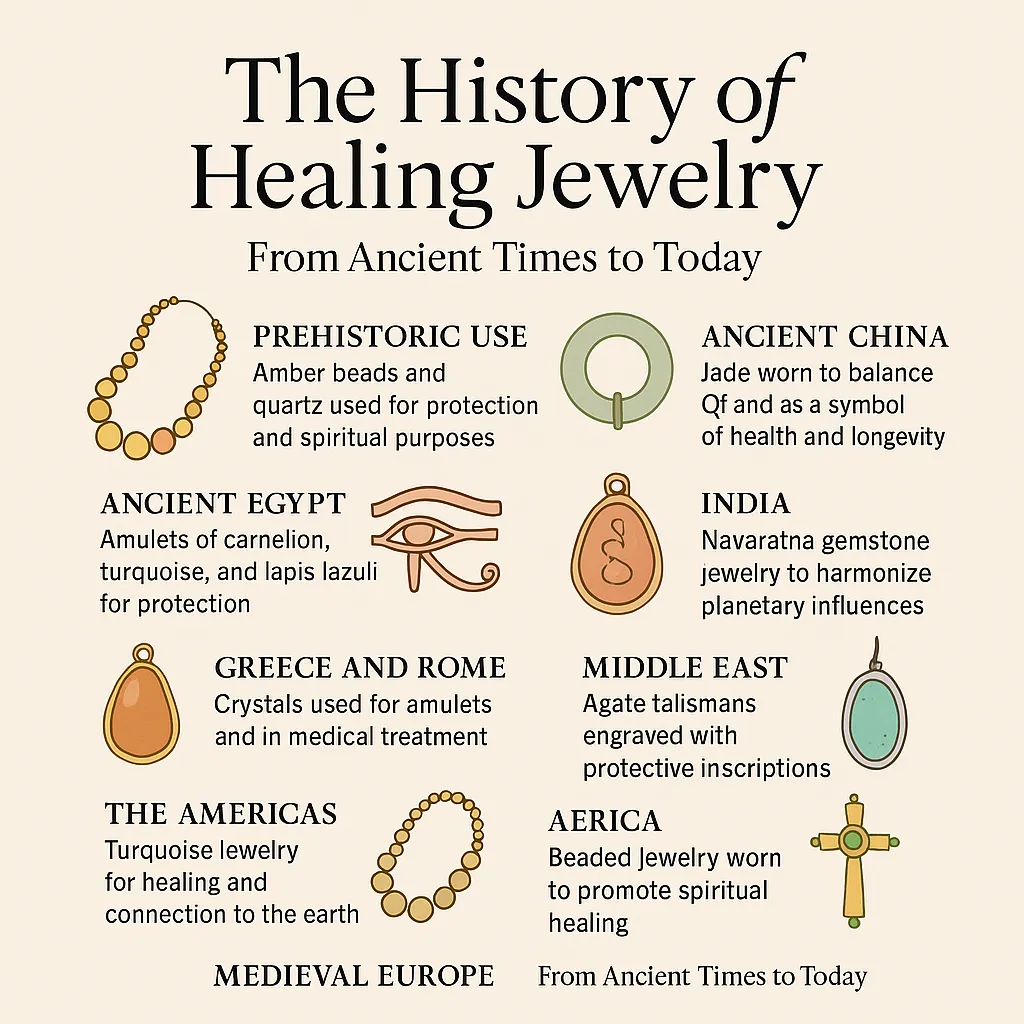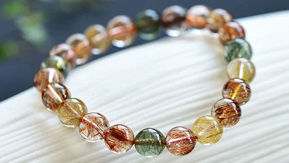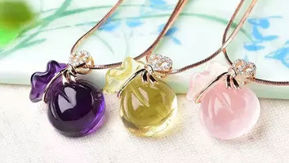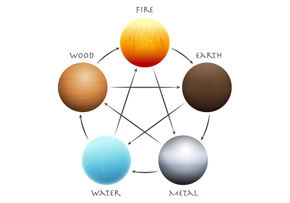Since the dawn of civilization, humanity has turned to the natural world not only for survival but for spiritual and emotional well-being. One of the most fascinating expressions of this connection is healing jewelry—objects worn on the body not just for beauty or status, but for their believed power to protect, energize, and heal.
Healing jewelry spans millennia and continents, appearing in every major ancient civilization. From the amulets of Ancient Egypt to the jade pendants of ancient China, from Native American turquoise talismans to the gemstone-laden malas of India, cultures across time have believed that certain stones, symbols, and metals can influence human energy and health.
This article explores the rich and diverse history of healing jewelry, tracing its roots through major civilizations and examining its relevance in the modern world.

1. Prehistoric and Early Human Use
• Origins in Animism and Nature Worship
Before organized religion, early humans practiced animism—the belief that all objects, living or not, possess a spiritual essence. Natural materials like shells, bones, and stones were used not only for decoration but to connect with spiritual forces. These were the earliest examples of healing jewelry.
Beads made of amber, a fossilized tree resin believed to hold sunlight and life force, have been discovered in Neolithic graves dating back to 8000 BCE in Europe. Archaeologists believe these beads served protective or magical purposes.
• Early Use of Crystals
Quartz, one of the most abundant minerals on Earth, has long been revered for its clarity and strength. Archaeological finds from prehistoric societies include quartz tools and talismans, hinting at a spiritual or healing value beyond utility.
2. Ancient Egypt: Amulets, Symbols, and Spiritual Protection
• The Role of Amulets
Egyptians believed deeply in the power of jewelry to influence both the physical and spiritual world. Amulets were crafted from stones like carnelian, turquoise, and lapis lazuli and worn around the neck, wrists, and ankles for protection in life and the afterlife.
The Eye of Horus, often made from lapis or obsidian, was worn to protect against illness and evil spirits. Scarab amulets symbolized rebirth and were placed with the dead for safe passage into the afterlife.
• Metals with Meaning
Gold, believed to be the flesh of the gods, was used extensively. It was thought to bring immortality and divine protection. Electrum (a natural alloy of gold and silver) was also considered sacred.
3. Ancient China: Jade and the Philosophy of Qi
• Jade: The Stone of Heaven
In Chinese culture, jade has been treasured for over 7,000 years, not just for its beauty but for its spiritual purity and connection to longevity, health, and virtue. Confucius praised jade for embodying the values of kindness, wisdom, and justice.
Worn as pendants, bangles, and talismans, jade was believed to balance the body's Qi (life energy) and protect the wearer from physical and spiritual harm. Even today, jade remains a cornerstone of Chinese wellness jewelry.
• Integration with Traditional Chinese Medicine
Chinese herbalists and healers incorporated jade rollers and carved jewelry in energy healing practices. It was believed to clear the meridians and stimulate the flow of life force.
4. India: Gem Therapy and Sacred Jewelry
• The Vedic Tradition of Navaratna
India has one of the oldest documented systems of gemstone healing through the Navaratna, or “nine gems,” each representing a celestial body. The belief is that by wearing specific gemstones in a precise arrangement, one can harmonize planetary influences and improve health, prosperity, and karma.
• Rudraksha and Tulsi Beads
Hindus wear rudraksha beads, made from the seeds of the Rudraksha tree, as necklaces and malas for meditation, healing, and protection. Tulsi (holy basil) wood is also used to create protective jewelry.
These sacred items are worn not only for their spiritual symbolism but also for their ability to generate calm, reduce stress, and enhance focus.
5. Greece and Rome: Symbolism and Medicine
• Crystals in Classical Philosophy
Ancient Greek philosophers like Theophrastus and Pliny the Elder wrote extensively about crystals. Amethyst, for instance, was believed to prevent drunkenness. The word “amethyst” comes from the Greek “amethystos,” meaning “not intoxicated.”
• Healing Rings and Gemstones
Romans wore rings with engraved gemstones like garnet, carnelian, and sapphire. These served both decorative and protective functions. Rings were thought to ward off illness, attract love, and protect against envy or witchcraft.
• Medical Application of Stones
Doctors in both cultures sometimes applied ground minerals in medicines or wore healing amulets. Even Galen, the famous Roman physician, acknowledged the psychological effects of wearing certain stones.
6. The Middle East: Talismans and Islamic Traditions
• Protective Inscriptions and Sacred Stones
In the Islamic world, healing jewelry took the form of inscribed talismans. Gemstones like agate (aqeeq) were engraved with verses from the Quran or names of Allah and worn for protection.
Prophet Muhammad is believed to have worn a silver ring set with a carnelian stone—making it popular in Islamic cultures even today. It is said to bring peace, strength, and spiritual balance.
7. The Americas: Native Jewelry and Earth Energies
• Turquoise in Native American Culture
Among Indigenous tribes of North America, turquoise was (and still is) revered as a sacred stone of the sky. The Navajo, Hopi, and Zuni peoples crafted necklaces, rings, and headdresses with turquoise to attract health, protection, and good fortune.
Turquoise was believed to provide a spiritual connection to the sky, the rain, and the ancestors, offering both healing and guidance.
• Symbolic Carvings and Totems
Jewelry wasn’t just made of stones but also included bone, wood, and shell, each imbued with specific meanings. Feathers and animal carvings in jewelry held spiritual symbolism and invoked ancestral protection.
8. Africa: Tribal Jewelry and Ancestral Healing
• Beads and Spiritual Power
In many African cultures, beads are more than decoration—they are tools for storytelling, spiritual practice, and healing. The Yoruba people of Nigeria wear beaded jewelry to communicate with deities (Orishas) and channel energy.
Colors, patterns, and materials were chosen for their spiritual resonance—blue for protection, red for vitality, and white for purity.
• Healing Through Ancestral Connection
Jewelry made with bone, ivory, or animal parts was used to honor ancestors and ask for their blessings in healing rituals. Shamans often wore elaborate healing necklaces during ceremonies.
9. Medieval Europe: Religion, Alchemy, and Superstition
• Religious Jewelry
Christian relics and crosses were worn not only for faith but for healing and divine protection. Pilgrims would often bring back blessed medallions believed to cure ailments.
• Gemstone Lore and Medical Manuals
During the Middle Ages, lapidaries (manuals of stones) became popular, listing the healing powers of each gem. For example, sapphire was believed to cure eye diseases, while coral could protect against evil spirits and plague.
Alchemy combined mysticism and early chemistry. Practitioners believed that metals and stones could transmute energy and influence health.
10. The Renaissance and Enlightenment: Science vs. Belief
• The Decline of Mystical Healing?
With the rise of science and rationalism, belief in healing jewelry began to wane in academic circles. The focus shifted to anatomy, medicine, and evidence-based health care.
Yet healing jewelry persisted among the populace—particularly in the form of birthstones and engraved charms.
• Astrology and Gemstones
Renaissance scholars often connected gemstones with astrology. It was believed that wearing a stone aligned with your zodiac sign could harmonize your energy and improve well-being—a belief that still exists today.
11. The 19th and 20th Century: Romanticism and New Age Revival
• Victorian Mourning Jewelry
In the Victorian era, healing and protective jewelry took a sentimental turn. Lockets containing hair or photos were believed to keep the spirit of a loved one close, helping with emotional healing.
Jet and black onyx were used in mourning jewelry to absorb grief and provide strength.
• The New Age Movement
The 1960s and 70s saw a resurgence of interest in spiritual healing and metaphysical practices. This was the birth of the crystal healing movement, blending Eastern philosophy with Western mysticism.
Quartz, amethyst, rose quartz, and obsidian surged in popularity for their healing energies. Jewelry makers began designing pieces specifically for chakra balancing, aura cleansing, and emotional wellness.
12. Modern Healing Jewelry: A Global Renaissance
• Healing Meets Fashion
Today, healing jewelry is more than a spiritual tool—it’s also a fashion statement. Designers and holistic practitioners alike embrace the power of crystals, sacred geometry, and traditional symbolism to craft jewelry that is as stylish as it is meaningful.
Popular materials include:
-
Amethyst – for calm and protection
-
Citrine – for abundance and creativity
-
Rose quartz – for emotional healing
-
Black tourmaline – for grounding and protection
-
Copper and silver – for circulation and energy flow
• Chakra and Reiki Jewelry
Many modern healing jewelry pieces are designed for chakra balancing, with specific stones and colors aligned to the body’s energy centers. Reiki-infused jewelry is also gaining traction, said to hold the vibrational charge of healing energy.
• Celebrity and Pop Culture Influence
Celebrities like Gwyneth Paltrow, Adele, and Kim Kardashian have brought healing crystals and jewelry into mainstream consciousness. Online platforms and boutique stores now offer handmade gemstone pieces infused with intention and spiritual purpose.
Conclusion: A Timeless Tradition in a Modern World
Healing jewelry, far from being a New Age novelty, is part of a deep and ancient lineage of spiritual practice, cultural tradition, and personal empowerment. From prehistoric amber beads to crystal chakra pendants worn today, humanity has always sought tangible ways to connect body, mind, and spirit.
Whether worn as sacred amulets, protective charms, or stylish accessories, healing jewelry continues to evolve—bridging ancient wisdom with contemporary design. Its popularity shows that in a fast-paced, digital world, we still yearn for grounding, balance, and spiritual connection.
Healing jewelry is not just about adornment; it's about alignment—with nature, tradition, energy, and self.

































